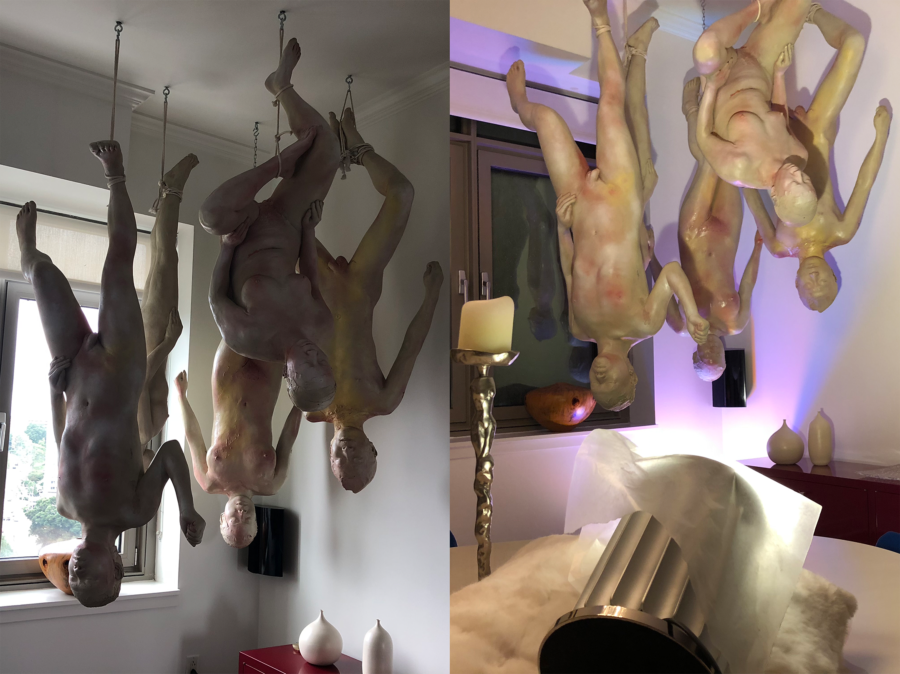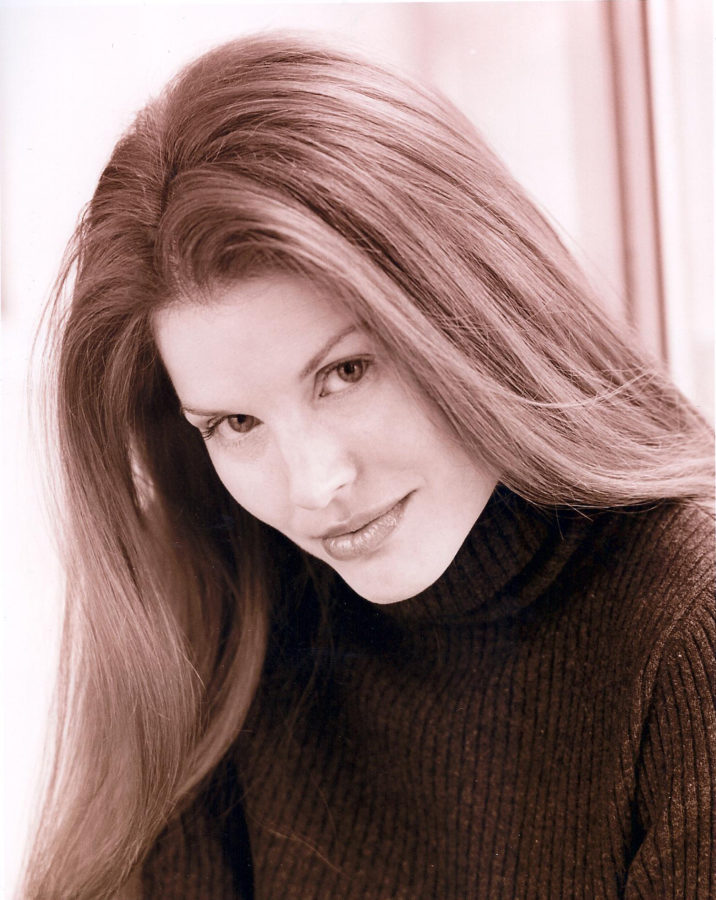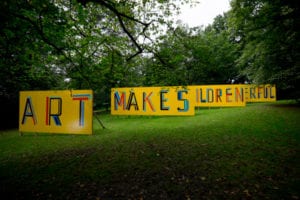top image// I always install Chinese Offspring by Zhang Dali where it forces me, and everyone else, to regularly reckon with it
One of the common questions at art schools these days is, “How do I make art that sells?”
I would never, ever presume to tell an artist what to make. First, I suck at it. (Found that out the hard way when I got way too specific with a tattoo artist.) Second, great art comes from within. I know when you’ve moved me—but I can’t tell you how to make something moving. What I can tell you is how to make your practice more collector-friendly. So this column’s for you, artists!
Make work that communicates your unique voice. All of us are drawn to art because you make us see the world in wonderful new ways. Not to get all Oprah on y’all, but you are the only you who will ever be. Great art is about revealing yourself, in all your glory and shadow, to the world. Your unique lens yanks the rest of us out of space and time to transcend our old patterns of thinking. That’s what we yearn for.
Thanks to an installation of five life-size sculptures that hang from our ceiling, I get to experience that transcendence every day. Zhang Dali made Chinese Offspring because of the migrants he saw living in miserable conditions near his studio on the outskirts of Beijing. They moved to the city because there wasn’t enough work where they came from in the provinces. They didn’t realize beforehand, though, that they couldn’t work in Beijing without special papers. That’s why he made the sculptures hang upside down—because the migrants were in limbo. They couldn’t move forward, and they couldn’t go back.
Giving us new perspectives is what you artists do best. If you want to sell your art, you also have to develop the business side of your practice. I know your fingers are twitching to click away, but don’t do it! This is the left-brain stuff you want to master in order to get rid of the day job that’s paying your bills right now.
You only need two key documents: a CV and an artist statement. That’s it. Just two.
Your CV (curriculum vitae) is like a resume, but it’s not. It’s critical, so don’t phone it in. Don’t stress either. Just appropriate a template from someone who’s already done a great job of it. I always point artists to Kelsey Shwetz (check out her #artpowerwomen feature). Her CV is perfection: super easy to read but chock full o’ info. Whether you’ve got tons of street cred or you’re just starting out, use her format to create a CV that shows collectors your accomplishments with minimal eye and brain strain. (We’ll dive more deeply into that later.)
Your artist statement is even shorter. It shouldn’t be more than a page. To engage collectors, steal the strategy we use on Curatious. Start with why you make what you make. That’s what hooks collectors. Once you’ve got us excited with your why, that’ll naturally take you into telling us about what you make and how you make it. When you start with why, your statement also gets much simpler to write. Don’t try to reinvent the wheel with this one either—get ideas from other artists. For great ones, look at this artist statement by Paula Flores (another of our #artpowerwomen).
If pulling together these two prose essentials still stymies you, get help! In NYC, both NYFA and MANA Contemporary hold regular how-to workshops. If you’re elsewhere, Google your local arts orgs to take advantage of their resources.
The next step is to take clear, high-res photos of your works. You don’t need a fancy camera or lighting. Your smartphone will do just fine. Use a white background and, if possible, natural light. If your work is shiny or natural light isn’t working, here’s a good trick. Point a bright lamp or flashlight at it, but cover the bulb with wax paper. (Yep, the stuff in your kitchen.) The wax paper diffuses the light so the image doesn’t have hot spots or weird shadows. Photograph each work by itself. For 2D works, take one shot dead on. For 3D works, take as many photos as you need to show all aspects of the work.

You don’t need special equipment to professionally photograph your work—just some ingenuity! Daylight wasn’t working for me, so here’s how I got the lighting right for the shot of this work above.
Post your work, CV, and artist statement online. Up until now, artists have needed their own websites. Unfortunately, that’s an enormous time and money drain. Now there’s social media and art-specific platforms you can use instead. Instagram is the art-world social media platform of choice—don’t bother with the others, but hashtagging alone won’t make your work collector-friendly. Minimize the scrolling factor so your work gets found more quickly. You know how it works: interact with art influencers like our friend, @girlseesart. Comment on their feeds, and they’ll comment on yours. Collectors follow curators to find new artists.
The real name of this game is to build critical acclaim for yourself. That’s what drives sales. Collectors want to see that knowledgeable art professionals endorse your work. Use Instagram to promote your practice, support other artists, and create art-world relationships. Enter juried shows and apply to residencies to build your CV. Go to art events to develop relationships with curators and gallerists. If you don’t have geographical access to a big art scene, join online communities. I founded Curatious specifically to build unbiased critical acclaim for artists online. We’re not open yet for all artists to post their work, but we will be soon. Then, no matter where you live, you’ll be able to build the critical acclaim you need.
Finally, use reputable sources to research how to price your work. Underpricing is nearly as bad as overpricing. A lot of collectors have you-get-what-you-pay-for mentality. If your work is selling for too little, they’ll think it’s not worth investing in, but overpricing your work is even worse. That can permanently turn off a collector. You’ve got better resources now than ever before because art pricing is becoming more transparent every day. So look for work that’s akin to yours from artists who have similar credentials.
Art isn’t like anything else. It starts revolutions. So get out there and change our world!

Holly Hager is an art collector and the founder of Curatious. Previously an author and a professor, she now dedicates herself full-time to help artists make a living from their art by making the joys of art more accessible to everyone.



